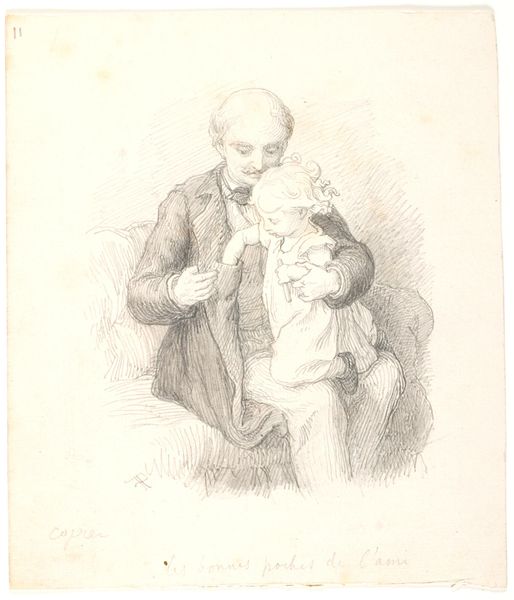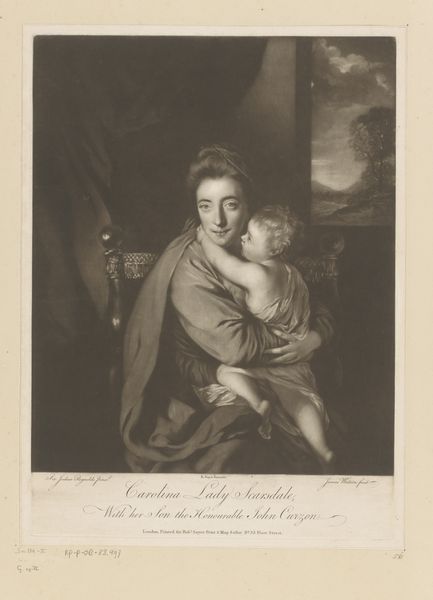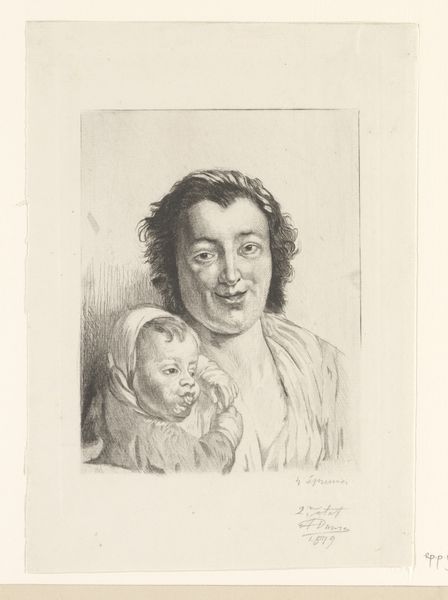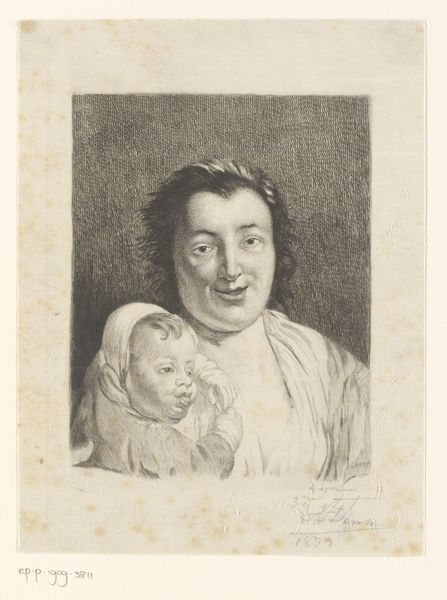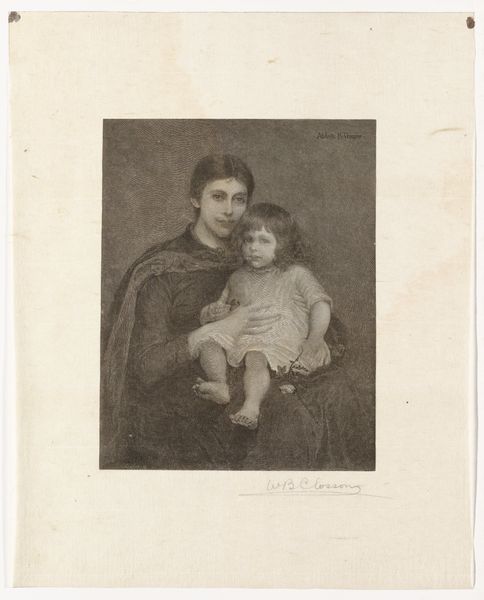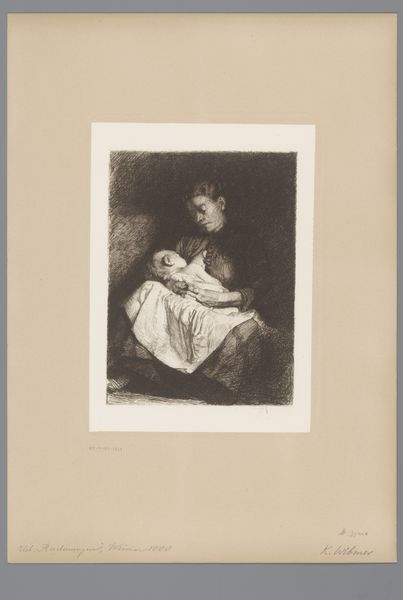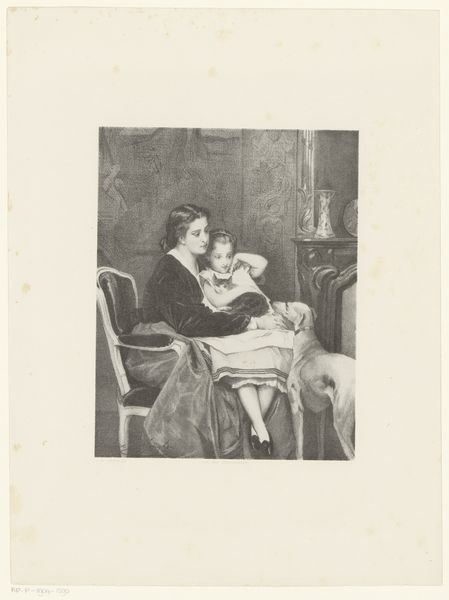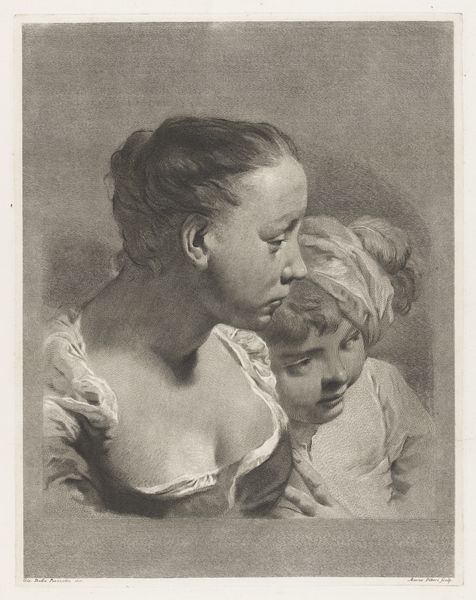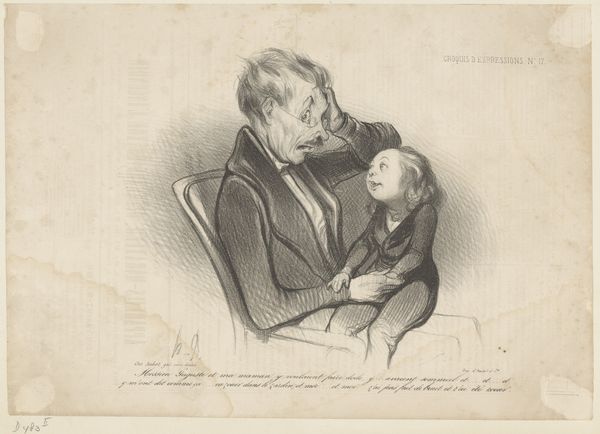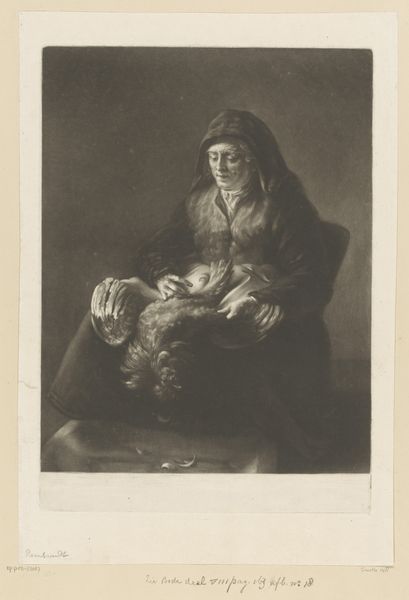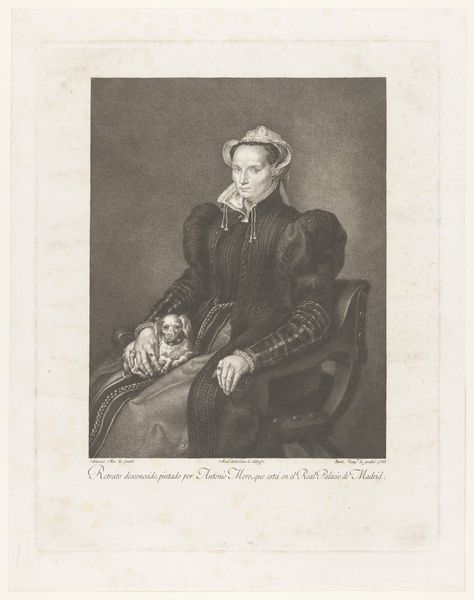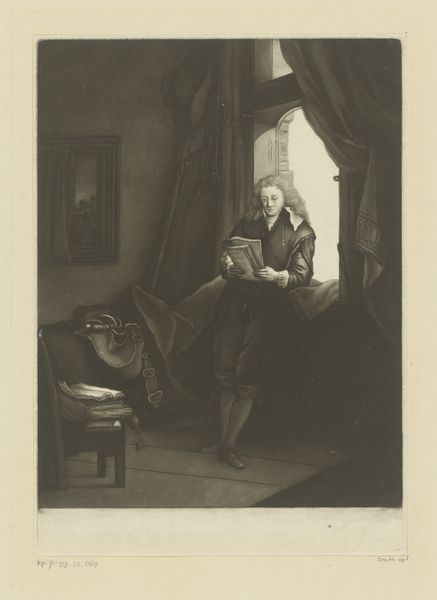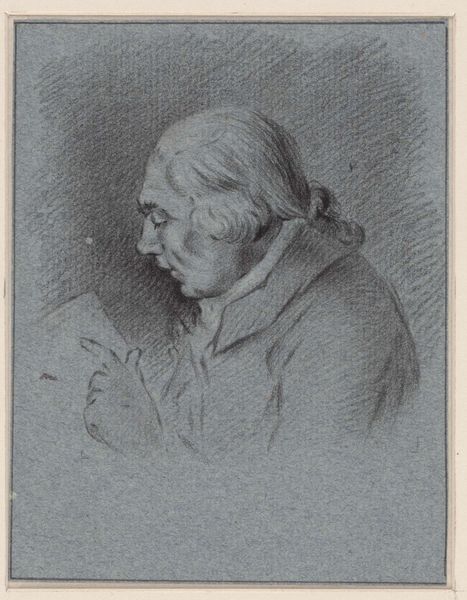
Dimensions: height 500 mm, width 350 mm
Copyright: Rijks Museum: Open Domain
Curator: Thomas Frye created this intriguing piece, "Man met zijn hand tegen zijn kin," sometime between 1760 and 1762. The artwork, a striking portrait, resides here at the Rijksmuseum and is rendered through engraving on paper. Editor: He looks like he's judging my life choices… deeply. I mean, it’s baroque drama at its finest! That pose, the light, all so… deliberate. He must be plotting something! Curator: Indeed! Baroque portraiture often served as a form of social and political signaling. Frye, with his London artistic background, skillfully navigates the visual language of status. Note how the engraving medium itself makes this accessible. What we might perceive as melodrama could be strategic engagement with a growing art market and bourgeois desires for representation. Editor: Strategic? Hmm, maybe. I still think there's some serious daydreaming, or scheming going on in that curly head of his. Look at the hand position; so gentle yet firm against the chin, conveying both thoughtfulness and quiet power. Maybe he’s pondering how to best disrupt the established norms or perhaps just what to wear to his next extravagant soiree. The ruff is impeccable! Curator: Or both. Artists, particularly portraitists, played a delicate game during this period. They had to satisfy the patron’s expectations while, consciously or not, inserting their readings of society. It's this negotiation which, to my eyes, make Baroque works like this interesting sites of social and art-historical interpretation. Editor: Exactly! Plus, I love the technical virtuosity required for engravings. Imagining painstakingly translating those subtle nuances of shadow and texture into a network of etched lines gives me shivers. This artist certainly managed to give what could be seen as a regular portrait a tangible character that goes far behind merely historical accuracy. I almost feel like I know the bloke. Curator: A point well made. Considering Frye’s history, namely running a porcelain factory, perhaps we’re also witnessing a creative mind deeply engaged with processes of reproduction and dissemination. He’s very conscious about the role his image will have outside these walls. Editor: It seems to me that he achieved a certain immortality. His enigmatic expression still resonates with us, inviting us to consider both the subject's and the artist’s place in time. A delightful rumination all round! Curator: Agreed, and by examining its visual markers and its function within the socio-cultural landscape, the artwork is both historical document and art object. Fascinating isn't it?
Comments
No comments
Be the first to comment and join the conversation on the ultimate creative platform.
